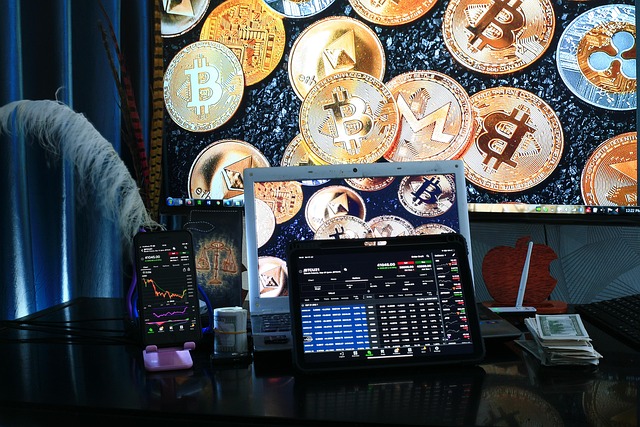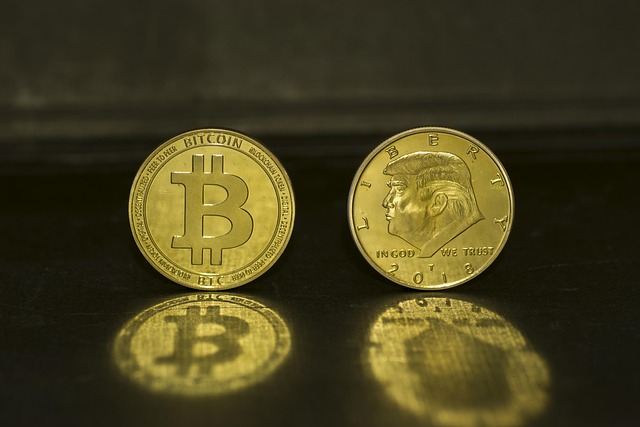Aussie regulator to shut 95 ‘hydra’ firms linked to crypto, romance scams
Australia’s corporate watchdog has been given the nod to shut down 95 “hydra” companies that it suspects engaged in crypto investment and romance scams, known as “pig butchering.”The Australian Securities and Investments Commission’s application to wind up the companies was approved by the Federal Court of Australia on just and equitable grounds after ASIC found that most of the companies had been incorporated with false information.Many of these companies were set up purporting to provide “genuine services” but were instead believed to be scamming their victims, ASIC Deputy Chair Sarah Court said in an April 8 statement.“There appears to be a common pattern of scam activity in the nature of ‘pig butchering,’” Justice Angus Stewart said in an April 4 court ruling after looking at 48 “Reviews of Misconduct” from 17 companies accused of facilitating romance scams. The judgment was made on March 21.Source: Rocky PerrottaPig butchering scams involve scammers building fake relationships with victims to win their trust before convincing them to invest in a fraudulent crypto or financial scheme.The securities regulator also suspects that much of the scam activity is coming from Southeast Asia.Insolvency and restructuring advisers Catherine Conneely and Thomas Birch of Cor Cordis have been appointed as joint liquidators of the 95 companies.Related: Australian regulator’s ‘blitz’ hits crypto exchanges, money remittersNearly 1,500 claims by “investors” had been received by the provisional liquidators, amounting to total claims of over $35.8 million, according to the court order.The claimants are based in 14 countries, including Australia, the US, Cameroon, Ghana, India, Nepal, the Philippines and France.The provisional liquidators found that only three of the 95 firms had assets to their name and recommended that the other 92 companies be wound up and immediately deregistered.ASIC shutting down scam websitesASIC said it has been removing around 130 scam websites each week of late, bringing its total to over 10,000 sites, which have included over 7,200 fake investment platform scams and 1,564 phishing scams.“However, these scams are like hydras: you shut down one and two more take its place. That’s why we’re warning consumers that the threat of scams and identity fraud remains high. We remind consumers to be vigilant,” Court said.Australia’s National Anti-Scam Centre recently reported a 26% fall in scam losses to $2 billion in 2024, while the number of scam reports also fell by 17.8% to 494,732.Magazine: Financial nihilism in crypto is over — It’s time to dream big again
SEC crypto trading roundtable to include crypto giants Uniswap, Coinbase
The US Securities and Exchange Commission has released the list of executives from US crypto and finance giants that will take part in a roundtable discussion on crypto trading regulation.On April 7, the regulator said its upcoming April 11 roundtable will discuss how it should handle crypto trading rules, calling it “Between a Block and a Hard Place: Tailoring Regulation for Crypto Trading.”It will be the second in a series of discussions on crypto, headed by its recently-formed Crypto Task Force.Taking part are Uniswap Labs chief legal officer Katherine Minarik, Cumberland DRW associate general counsel Chelsea Pizzola and Coinbase institutional product vice president Gregory Tusar — all firms that had once been in the regulator’s scope.Under the Biden administration, the regulator sued Cumberland DRW in October and Coinbase in June 2023 for alleged securities law violations, but both lawsuits were dropped this year under the Trump administration.The SEC also started an investigation for possible enforcement action into Uniswap Labs in April 2024, which was dropped in February with no further action.Also taking part in the roundtable are New York Stock Exchange product chief Jon Herrick, crypto brokerage FalconX business lead Austin Reid, securities tokenizing firm Texture Capital CEO Richard Johnson and the University of California, Berkeley finance chair Christine Parlour.Source: SECDave Lauer, co-founder of the advocacy group We the Investors and Tyler Gellasch, CEO of the not-for-profit Healthy Markets Association, will also take part, while law firm Goodwin Procter partner Nicholas Losurdo will moderate the discussion.Representing the SEC will be acting chair Mark Uyeda, Crypto Task Force chief of staff Richard Gabbert and Commissioners Caroline Crenshaw and Hester Peirce.The roundtable is the second crypto-focused discussion in a series of five that the SEC dubbed the “Spring Sprint Toward Crypto Clarity.” The first was on March 21, regarding the legal status of crypto, while three future discussions will cover custody, tokenization, and decentralized finance (DeFi).SEC’s Uyeda orders review of staff crypto commentsThe roundtables come as the SEC, under President Donald Trump, works to revamp its oversight of the crypto industry, with its latest action being to review staff statements on crypto so they can possibly be changed or withdrawn.Uyeda said in an April 5 statement shared by the SEC on X that due to Trump’s executive order on deregulation and recommendations from the Elon Musk-led Department of Government Efficiency, or DOGE, he was reviewing seven staff statements, five of which concerned crypto.Source: SEC“The purpose of this review is to identify staff statements that should be modified or rescinded consistent with current agency priorities,” Uyeda said.Related: SEC paints ‘a distorted picture’ of USD stablecoin market — Crenshaw The first on the list was an April 2019 analysis from the Strategic Hub for Innovation and Financial Technology on how crypto sales could be investment contracts under the securities defining Howey test — an argument the agency had made to sue multiple crypto firms for legal violations.Also up for review are two Division of Investment Management statements, one from May 2021 asking investors to consider the risks of funds with exposure to Bitcoin futures and a November 2020 statement asking for feedback on whether state-chartered banks meet standards to be qualified custodians.The SEC will also look into a December 2022 Division of Corporation Finance statement that urged SEC-regulated companies to evaluate their disclosures to mention if a slew of crypto firm bankruptcies and collapses at the time impacted their business.Finally, the agency will review a Division of Examinations alert from February 2021 that said, “a number of activities related to the offer, sale and trading of digital assets that are securities present unique risks to investors.” Legal Panel: XRP win leaves Ripple a ‘bad actor’ with no crypto legal precedent set
Over 90% of WazirX creditors support post-hack restructuring plan
More than 90% of the voting creditors of the Indian crypto exchange WazirX voted in favor of the platform’s post-hack restructuring plan.According to an April 7 announcement, 93.1% of voting creditors who hold 94.6% of the value voted in favor of the plan. All creditors who held crypto balances on the platform were eligible to vote on the Kroll Issuer Services platform from March 19 until March 28.WazirX co-founder and CEO Nischal Shetty told Cointelegraph that with the plan approved, stolen asset recovery is “a primary focus.” Still, he pointed to profit sharing as a further measure that the firm hopes to use to compensate its users.The news follows early February reports that WazirX had warned that repayments from the $235 million hack against it could be delayed until 2030 if creditors didn’t approve its proposed restructuring plan. At the time, the platform said that creditors might need to endure “unclear and potentially extended timelines” if the plan wasn’t approved.WazirX said creditors could face repayment delays if they voted against the restructuring plan. Source: WazirXShetty celebrated the vote results in a subsequent X post. He wrote:“The people have spoken. We will work hard on rebuilding and creating value for everyone.”Related: CoinSwitch launches $70M recovery fund for WazirX hack victimsThe plan for repaying creditorsShetty described the result as “an important milestone in the recovery process” that “reflects a shared belief in the proposed restructuring plan.” The plan in question was developed under the supervision of Singapore’s legal system and announced in January, it entails WazirX holding liquid assets amounting to $566.4 million USDt — while the claims amount to $546.5 million USDT.The exchange also released recovery tokens to settle outstanding claims, which allows creditors to benefit from future platform operations and asset recovery. WazirX promised to return funds through token distributions that could yield 75% to 80% of the value of users’ account balances at the time of the cyberattack. The rest would be represented by recovery tokens, which will be periodically repurchased using profits generated from platform operations and a proposed decentralized exchange (DEX). Plans to launch the DEX were unveiled in November 2024, when Shetty said that it will help prevent hack losses from happening again:”The best thing is that you’ll be able to self-custody your assets here — your assets will be completely under your control — and you can freely trade or do what you want with your assets.”Shetty also told Cointelegraph that the DEX will aim to be much simpler to interact with than the usual experience of decentralized trading platforms. He said, “Our goal is to make it on par with our CEX in terms of ease of operating.”Related: Binance, WazirX among crypto firms evading taxes in India, says gov’tA North Korea-linked hackWazirX lost $234.9 million of digital assets in a Safe Multisig wallet in mid-July 2024. The attack was attributed to North Korean state actors and unfolded with alarming speed and precision, with many speculating on its impact on the broader crypto industry in India.Shetty told Cointelegraph that — to prevent future hacks — WazirX has moved to BitGo and Zodia for crypto custody, promising “enhanced protection of funds.” The partnerships also reportedly include insurance.Hacks continue to be a significant issue for the cryptocurrency industry. According to recent reports, over $2 billion was lost to cryptocurrency hacks in the first quarter of 2025 alone, with nearly $1.63 billion being lost to just access control exploits.This is also the third quarter in a row that — much like in WazirX’s case — the top exploit was a multisignature-related event. Hacken shared a key lesson on the subject:“Securing digital assets requires more than just secure on-chain code — the entire infrastructure, from front-end interfaces to internal processes, must be equally hardened, as all it takes is a single weak spot to wreck the entire system.“Magazine: China’s ‘point running’ crypto scams, pig butchers kidnap kids: Asia Express
Trader stakes $0.05 of SOL for 3,000 years: Here’s what it’ll be worth in 5138
A crypto user has gone very long on Solana, staking a very small portion of the token for the next 3,000 years, according to blockchain analytics firm Arkham Intelligence.The unknown user staked $0.05 Solana (SOL) in 2023, and it will unlock in the year 5138, Arkham said in an April 5 post to X.Speaking to Cointelegraph, Vincent Liu, chief investment officer at Kronos Research, said the move was likely a symbolic act reflecting a strong belief and conviction in Solana’s long-term ecosystem.Source: Arkham Intelligence“Legacy staking is more than locking assets it’s a mindset. The real edge in crypto isn’t in chasing short-term hype, but in holding long-term conviction assets through cycles,” he said.Adding that: “this kind of thinking builds not just portfolios, but long term legacies.”SOL is currently trading for $102, according to CoinMarketCap. A January report from asset manager Bitwise predicts the token could be worth between $2,300 and over $6,000 by 2030.It’s impossible to know what the staked SOL will be worth by the time it’s unlocked in a few thousand years, but Liu says it would likely be a significant sum.“If SOL appreciates just 2–5% annually, the compounding over 3,000 years becomes exponential. In any market condition, long-term compounding remains one of the most powerful financial forces,” he said.Staking Solana for over 3 millennia To put it into perspective, 5 cents compounded annually at a 3% annual interest rate would already result in over $486 undecillion (486 followed by 36 zeros) after 3,115 years. However, the Solana sum would likely be much higher, given staking rewards are paid out every two to three days and compounded. Users on X are speculating that the stake could be an attempt at creating generational wealth, or a random stunt with no real long-term plan.Source: Arkham IntelligenceKadan Stadelmann, chief technology officer at blockchain platform Komodo, told Cointelegraph he thinks the “3,000-year nickel play on SOL is a meme trade” that will one day be stamped on the SOL blockchain.Related: Solana TVL hits new high in SOL terms, DEX volumes show strength — Will SOL price react?“What will 3,000 years from now look like? Will humans still be around? Will the Solana blockchain? Such a long time horizon makes one ponder one’s place in the scheme of things,” Stadelmann said. He speculates people might even seek to outdo it by “making a 5,000-year play.”At the moment, depending on the platform and validator choice, Solana can offer between 5% to over 8% in staking rewards. Meanwhile, Cardano (ADA) can start at around 2%, and Ether (ETH) staking rewards are usually between 2% and 7%.Four Solana whales recently profited over $200 million in a staking play that began in April 2021, when they staked 1.79 million Solana, worth $37.7 million at the time. A similar unlock is expected in 2028. Magazine: Bitcoin heading to $70K soon? Crypto baller funds SpaceX flight: Hodler’s Digest, March 30 – April 5
CFPB likely to step back from crypto regulation — Attorney
The Consumer Financial Protection Bureau (CFPB) will likely see a reduced role in crypto regulations as other federal agencies like the Securities and Exchange Commission (SEC) and state-level regulators assume a bigger role in crypto policy, according to Ethan Ostroff, partner at the Troutman Pepper Locke law firm.”I think with the current administration, my sense is, we are highly likely to see a significant pullback by the CFPB in the context of the activity by other regulators,” Ostroff told Cointelegraph in an interview.State regulators also have the authority under the Consumer Financial Protection Act (CFPA) to assume some of the regulatory roles of the CFPB, the attorney said but also added that some regulatory functions will continue to fall within the purview of the CFPB as a matter of established law.Ostroff cited the New York Department of Financial Services (NYDFS) and the California Department of Financial Protection and Innovation (DFPI) as regulators to keep an eye on as potential leaders of crypto regulations at the state level.However, the attorney clarified that while the CFPB may see a diminished role during the Trump administration, the agency would not be outright dismantled during the current regime due to “statutorily mandated obligations and requirements” that require acts of Congress to change.Related: Elon Musk’s ‘government efficiency’ team turns its sights to SEC — ReportTrump administration targets CFPB in efficiency pushThe Trump administration targeted the CFPB as part of a broader push by the Department of Government Efficiency (DOGE) to slash government spending and reduce the federal debt.Russell Vought, the recently appointed head of the CFPB, announced major funding cuts to the agency and scaled back operations within days of assuming the helm at the CFPB in February 2025.Source: Russell VoughtMassachusetts Senator Elizabeth Warren criticized Elon Musk for dismantling the CFPB, which the US senator co-founded back in 2007.Warren characterized Musk as a “bank robber” and claimed that the Trump administration dismantled the CFPB to undo consumer protection rules and have greater control over the financial system.In a February 12 interview with Mother Jones, the senator stressed that the Executive Branch of government does not have the statutory authority to fully dismantle the CFPB, which can only be done through Congressional approval.Magazine: SEC’s U-turn on crypto leaves key questions unanswered
Wall Street’s one-day loss tops the entire crypto market cap
The United States stock market lost more in value over the April 4 trading day than the entire cryptocurrency market is worth, as fears over US President Donald Trump’s tariffs continue to ramp up.On April 4, the US stock market lost $3.25 trillion — around $570 billion more than the entire crypto market’s $2.68 trillion valuation at the time of publication.Nasdaq 100 is now “in a bear market”Among the Magnificent-7 stocks, Tesla (TSLA) led the losses on the day with a 10.42% drop, followed by Nvidia (NVDA) down 7.36% and Apple (AAPL) falling 7.29%, according to TradingView data.The significant decline across the board signals that the Nasdaq 100 is now “in a bear market” after falling 6% across the trading day, trading resource account The Kobeissi Letter said in an April 4 X post. This is the largest daily decline since March 16, 2020.”US stocks have now erased a massive -$11 TRILLION since February 19 with recession odds ABOVE 60%,” it added. The Kobessi Letter said Trump’s April 2 tariff announcement was “historic” and if the tariffs continue, a recession will be “impossible to avoid.”Source: Anthony ScaramucciOn April 2, Trump signed an executive order establishing reciprocal tariffs on trading partners and a 10% baseline tariff on all imports from all countries. Trump said the reciprocal tariffs will be roughly half the rate US trading partners impose on American goods.Related: Bitcoin bulls defend $80K support as ‘World War 3 of trade wars’ crushes US stocksMeanwhile, the crypto industry has pointed out that while the stock market continues to decline, Bitcoin (BTC) remains stronger than most expected.Crypto trader Plan Markus pointed out in an April 4 X post that while the entire stock market “is tanking,” Bitcoin is holding. Source: Jeff DormanEven some crypto skeptics have pointed out the contrast between Bitcoin’s performance and the US stock market during the recent period of macro uncertainty.Stock market commentator Dividend Hero told his 203,200 X followers that he has “hated on Bitcoin in the past, but seeing it not tank while the stock market does is very interesting to me.”Meanwhile, technical trader Urkel said Bitcoin “doesn’t appear to care one bit about tariff wars and markets tanking.” Bitcoin is trading at $83,749 at the time of publication, down 0.16% over the past seven days, according to CoinMarketCap data.Magazine: XRP win leaves Ripple a ‘bad actor’ with no crypto legal precedent set
Bitcoin crash risk to $70K in 10 days increasing — Analyst says it’s BTC’s ‘practical bottom’
Analysts say Bitcoin (BTC) price could drop to $70,000 within the next ten days as one BTC pricing model suggests that the US-led trade war could upend investors’ risk-asset sentiment.In his latest X analysis, network economist Timothy Peterson warned that Bitcoin may return to its 2021-era all-time high.$70,000 is Bitcoin’s “practical bottom”Bitcoin price expectations continue to deteriorate as the impact of “higher than expected” US trade tariffs hits home.For Peterson, the outlook now includes an uncomfortable trip down memory lane.“Bitcoin to $70k in 10 days?” he queried.An accompanying chart compared Bitcoin bear markets and included Peterson’s Lowest Price Forward (LPF) metric — a historically accurate yardstick for gauging long-term BTC price bottoms.“While this chart is not a prediction, it does provide data-driven expectations for what Bitcoin could do,” he continued. “If it continues to track along the 75th percentile bear market range, then 70k would be the practical bottom.”Bitcoin bear market comparison with LPF data. Source: Timothy Peterson/XPeterson noted that the theory ties in with current LPF data, which last month said that BTC/USD was 95% certain to preserve the 2021 highs as support. Prior to that, the metric successfully delivered a $10,000 price floor in mid-2020, with Bitcoin never again dropping below it after September that year.Continuing, Peterson revealed probabilities for April which showed BTC price expectations in a state of flux.“Bitcoin went from 75% chance of having a positive month to a 75% chance of having a negative month in just 2 days,” he summarized alongside another proprietary chart.April BTC price expectations. Source: Timothy Peterson/XRelated: Bitcoin sales at $109K all-time high ‘significantly below’ cycle tops — GlassnodeBitcoin’s current price action is “often what a bottom looks like”The bearish outlook of Peterson’s model is far from the only bearish warning coming to light this week.As noted by onchain analytics firm Glassnode, many traders are attempting to shield themselves from further crypto market turmoil.“Puts are trading at a premium to calls, signaling a spike in demand for downside protection. This skew is most pronounced in short-term maturities – a level of fear not seen since $BTC was in the $20Ks in mid-’23,” it revealed in an X thread on April 4.Bitcoin options delta skew. Source: Glassnode/XGlassnode nonetheless acknowledged that while under pressure, current price performance does not constitute a post-tariff capitulation of the sort seen in stocks.“Despite this, $BTC hasn’t broken down like equities did on recent tariff headlines. That disconnect – rising panic without a price collapse – makes the current options market setup especially notable,” it continued.“Skew like this usually appears when positioning is one-sided and fear runs high. TLDR: panic is elevated, but price is holding. That’s often what a bottom looks like.”This article does not contain investment advice or recommendations. Every investment and trading move involves risk, and readers should conduct their own research when making a decision.
Solana whales begin offloading SOL amid $200M staking unlock
Solana whales have offloaded their tokens to cash in on gains from a staking play that began four years ago. In April 2021, four whale addresses staked 1.79 million Solana (SOL) tokens, then worth about $37.7 million. The stake was unlocked on April 4, in what Arkham Intelligence called “the largest single-day unlock of staked SOL.” The firm noted that the next similar unlock is not expected until 2028.At the time of the unlock, the tokens were valued at roughly $206 million, representing a 446% gain from the initial staking period.Solana tokens scheduled to be unlocked on April 4. Source: ArkhamSolana whales sold nearly $50 millionAfter the tokens were unlocked, the whales started to dump their holdings. Arkham data shows that over 420,000 SOL tokens, worth about $50 million, had been unstaked by the four Solana wallets at the time of writing. Following the unlock, blockchain analytics firm Lookonchain said the whales had started offloading their funds. One wallet address dumped nearly 260,000 SOL tokens worth over $30 million. Three other wallets sold about $16 million in SOL. Arkham data shows that the four wallets still hold about 1.38 million SOL tokens worth roughly $160 million. The SOL unlock follows a significant decrease in SOL token prices since April 2. CoinGecko data shows that on April 2, SOL hit a high of $131.11. At the time of writing, Solana was trading at $114.66, a 12% decrease in two days. Solana token seven-day price chart. Source: CoinGeckoRelated: Babylon users unstake $21M in Bitcoin following token airdropFTX wallets unstaked $431 million in SOLThe unstaking event by four whale wallets follows another large unlock, by bankrupt crypto exchange FTX and its trading arm, Alameda Research. On March 4, FTX and Alameda wallets unstaked over 3 million Solana tokens worth about $431 million. The event was FTX’s largest SOL unlock since it started selling its tokens in November 2023. Data from the analysis platform Spot On Chain shows that since November 2023, the bankrupt crypto exchange has unstaked 7.83 million SOL tokens. The assets were sold for $986 million at an average price of $125.80 per SOL.Magazine: XRP win leaves Ripple a ‘bad actor’ with no crypto legal precedent set
Trump tariffs squeeze already struggling Bitcoin miners — Braiins exec
The new trade tariffs announced by US President Donald Trump may place added pressure on the Bitcoin mining ecosystem both domestically and globally, according to one industry executive.While the US is home to Bitcoin (BTC) mining manufacturing firms such as Auradine, it’s still “not possible to make the whole supply chain, including materials, US-based,” Kristian Csepcsar, chief marketing officer at BTC mining tech provider Braiins, told Cointelegraph.On April 2, Trump announced sweeping tariffs, imposing a 10% tariff on all countries that export to the US and introducing “reciprocal” levies targeting America’s key trading partners.Community members have debated the potential effects of the tariffs on Bitcoin, with some saying their impact has been overstated, while others see them as a significant threat.Tariffs compound existing mining challengesCsepcsar said the mining industry is already experiencing tough times, pointing to key indicators like the BTC hashprice.Hashprice — a measure of a miner’s daily revenue per unit of hash power spent to mine BTC blocks — has been on the decline since 2022 and dropped to all-time lows of $50 for the first time in 2024.According to data from Bitbo, the BTC hashprice was still hovering around all-time low levels of $53 on March 30.Bitcoin hashprice since late 2013. Source: Bitbo“Hashprice is the key metric miners follow to understand their bottom line. It is how many dollars one terahash makes a day. A key profitability metric, and it is at all-time lows, ever,” Csepcsar said.He added that mining equipment tariffs were already increasing under the Biden administration in 2024, and cited comments from Summer Meng, general manager at Chinese crypto mining supplier Bitmars.Source: Summer Meng“But they keep getting stricter under Trump,” Csepcsar added, referring to companies such as the China-based Bitmain — the world’s largest ASIC manufacturer — which is subject to the new tariffs.Trump’s latest measures include a 34% additional tariff on top of an existing 20% levy for Chinese mining imports. In response, China reportedly imposed its own retaliatory tariffs on April 4.BTC mining firms to “lose in the short term”Csepcsar also noted that cutting-edge chips for crypto mining are currently massively produced in countries like Taiwan and South Korea, which were hit by new 32% and 25% tariffs, respectively.“It will take a decade for the US to catch up with cutting-edge chip manufacturing. So again, companies, including American ones, lose in the short term,” he said.Source: jmhorpCsepcsar also observed that some countries in the Commonwealth of Independent States region, including Russia and Kazakhstan, have been beefing up mining efforts and could potentially overtake the US in hashrate dominance.Related: Bitcoin mining using coal energy down 43% since 2011 — Report“If we continue to see trade war, these regions with low tariffs and more favorable mining conditions can see a major boom,” Csepcsar warned.As the newly announced tariffs potentially hurt Bitcoin mining both globally and in the US, it may become more difficult for Trump to keep his promise of making the US the global mining leader.Trump’s stance on crypto has shifted multiple times over the years. As his administration embraces a more pro-crypto agenda, it remains to be seen how the latest economic policies will impact his long-term strategy for digital assets.Magazine: Bitcoin ATH sooner than expected? XRP may drop 40%, and more: Hodler’s Digest, March 23 – 29
US court fines UAE crypto firm CLS Global $428K for wash trading
Authorities in the US state of Massachusetts continue targeting unlawful cryptocurrency market practices, with a local court fining crypto financial services firm CLS Global.A federal court in Boston on April 2 sentenced CLS Global on criminal charges related to fraudulent manipulation of crypto trading volume, according to an announcement from the Massachusetts US Attorney’s Office.In addition to a $428,059 fine, the court prohibited CLS Global from offering services in the US for a probation period of three years.CLS Global, a crypto market maker registered in the United Arab Emirates, in January pleaded guilty to one count of conspiracy to commit market manipulation and one count of wire fraud.CLS agreed to manipulate the FBI’s “trap token” NexFundAIThe charges against CLS Global followed an undercover law enforcement operation involving NexFundAI, a token created by the FBI as part of a sting operation in May 2024.CLS Global was among at least three firms that took the FBI’s bait and agreed to provide “market maker services” for NexFundAI, including a fraudulent scheme to attract investors to purchase the token.In October 2024, the Securities and Exchange Commission announced fraud charges against CLS and its employee, Andrey Zhorzhes. The US securities regulator also filed complaints against two other NexFundAI manipulators, Hong Kong-linked ZM Quant Investment and Russia-linked Gotbit Consulting.CLS Global’s profileAccording to CLS Global CEO Filipp Veselov, the company was founded in 2017 to fill in a “huge gap in the market for high-quality market-making solutions and trading consulting.”Prior to CLS, Veselov worked at the Russian cryptocurrency exchange platform Latoken, which is advertised as a “global digital asset exchange” and has about 370,000 followers on X.The CLS team also includes chief revenue officer Pavel Singaevskii, who previously served as sales manager at Stex, a crypto platform that reportedly ceased operations without warning in 2023.Source: CLS GlobalAccording to CLS Global’s X page, the platform continues operating and has more than 110,000 followers at the time of publication.How much wash trading is in crypto?Wash trading is an illegal practice involving artificially inflating trading volume by repeatedly buying and selling the same asset, generating a misleading perception of demand.According to a January 2025 report by the US blockchain analytics firm Chainalysis, the crypto market has at least $2.6 billion in estimated wash traded volumes, or just about 2% of total daily crypto trading volumes, as reported by CoinGecko.Estimated wash trade volume in crypto. Source: ChainalysisRelated: Russian Gotbit founder strikes $23M plea deal with US prosecutorsSome studies indicate that wash trading makes up a bigger share of the crypto market.In 2022, the US National Bureau of Economic Research reported that illegal wash trading may account for as much as 70% of average trading volumes on unregulated exchanges.Magazine: Financial nihilism in crypto is over — It’s time to dream big again










